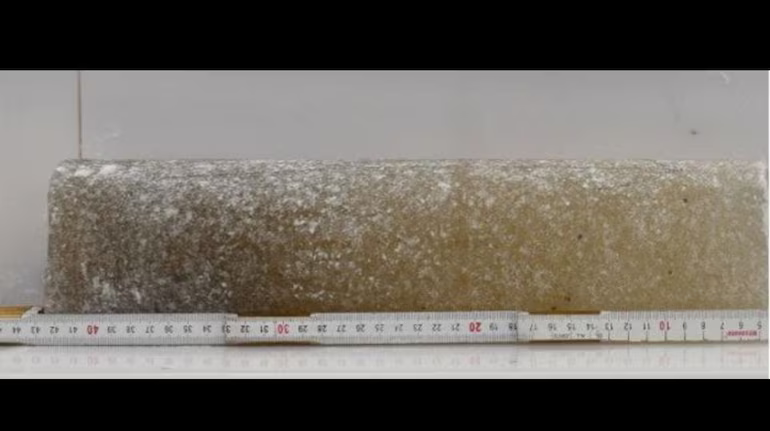World’s Oldest Ice, Dated Six Million Years, Discovered in Antarctica

IN NEWS — World’s Oldest Ice, Dated Six Million Years, Discovered in Antarctica
Analysis
- A team of U.S. researchers has discovered the world’s oldest directly dated ice, along with trapped ancient air, in the Allan Hills region of East Antarctica.
- The ice has been dated to approximately six million years, making it the oldest directly measured sample of ice and atmospheric gases ever found on Earth.
- The findings were published in the journal Proceedings of the National Academy of Sciences (PNAS).
- The research was led by Sarah Shackleton (Woods Hole Oceanographic Institution) and John Higgins (Princeton University) under the Center for Oldest Ice Exploration (COLDEX) — a National Science Foundation (NSF) funded consortium involving 15 U.S. research institutions, coordinated by Oregon State University.
Key Scientific Insights
- Dating Methodology
- Scientists used argon isotope dating, a precise noble gas analysis technique, to directly measure the age of the ice.
- Trapped air bubbles within the ice provided rare samples of the Earth’s ancient atmosphere, revealing greenhouse gas and temperature variations over millions of years.
- Climatic Revelations
- Oxygen isotope measurements indicate that Antarctica cooled by approximately 12°C over the past six million years.
- This is the first direct long-term record of temperature change from Antarctica’s surface ice.
- Paleoclimate Significance
- The ice preserves atmospheric conditions from a period when Earth was significantly warmer and sea levels were higher, offering crucial insight into ancient greenhouse gas concentrations.
- Findings help scientists understand Earth’s natural cooling mechanisms and long-term climate evolution prior to human impact.
- Field Research Context
- The Allan Hills area is ideal for ancient ice preservation due to strong katabatic winds and minimal snow accumulation, which limit ice flow and retain older layers closer to the surface.
- Field teams spent months drilling through the ice sheet’s edges where ancient layers are accessible.
- Future Research Plans
- The COLDEX project plans further drilling between 2026–2031, aiming to discover even older ice records, potentially extending the Earth’s climate chronology beyond six million years.
- The work is supported by the NSF Office of Polar Programs, the U.S. Antarctic Program, and the NSF Ice Core Facility (Denver, Colorado).
Static / Background Information
- Allan Hills (East Antarctica): A region known for exposure of ancient blue ice layers due to wind erosion, aiding paleoclimate research.
- Ice Cores as Climate Archives: Ice cores trap air bubbles that record greenhouse gas levels (CO₂, CH₄), temperature proxies (δ¹⁸O, δD), and dust concentrations — vital for reconstructing past climate patterns.
- National Science Foundation (NSF): A U.S. government agency that supports fundamental research in science and engineering, including polar studies through its Office of Polar Programs.
Updated – 30 October 2025 ; 2:58 pm | News Source: Moneycontrol